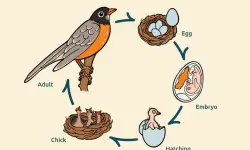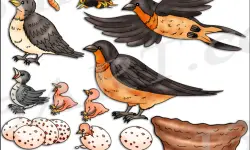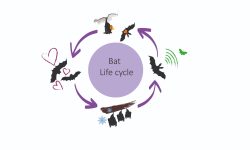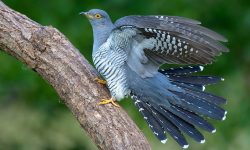Tucked away in the sun-drenched Mediterranean landscapes of Spain’s Balearic Islands lives a bird you won’t find anywhere else in the world: the Balearic Warbler (Curruca balearica). Small, elusive, and full of character, this songbird is one of the Balearic archipelago’s natural treasures. With its soft, scratchy song and preference for dry, low-growing vegetation, the Balearic Warbler is a true emblem of the region’s unique biodiversity.
Whether you’re a seasoned birdwatcher or a curious traveler, discovering the Balearic Warbler in its natural habitat is a rewarding experience. In this guide, we’ll explore where to find this endemic bird in Spain, its preferred environments, and what makes it so distinctive among Mediterranean warblers.
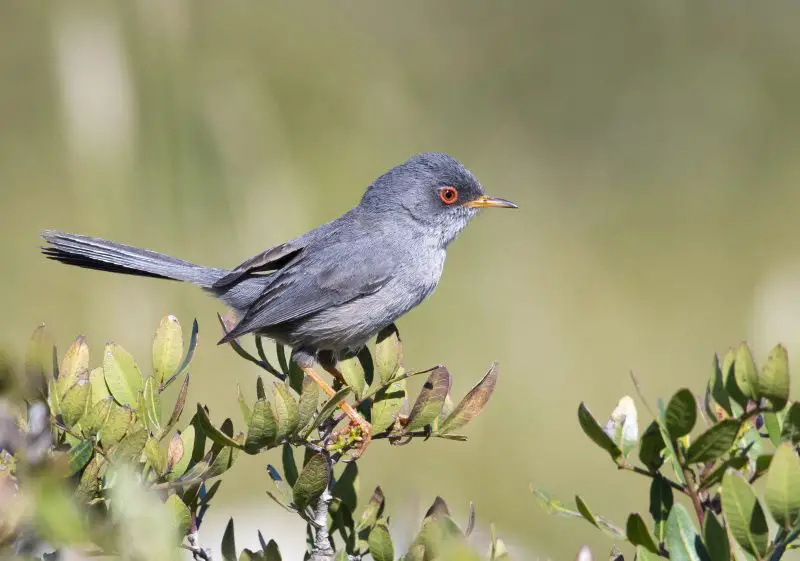
The Balearic Warbler at a Glance
Physical Characteristics
Delicate, elusive, and surprisingly expressive, the Balearic Warbler (Curruca balearica) is a compact bird with an understated elegance. Measuring just 12 to 13 centimeters in length, it slips easily through dense Mediterranean shrubland, often going unnoticed until it flits to a perch or lets out its telltale call.
Its plumage is a soft, dusky grey, perfectly adapted for blending into the stony, sunbaked landscapes of the Balearic Islands. The throat and chest are lighter, sometimes flushed with a faint wash of pink or buff, giving the bird a subtle but pleasing contrast in tone. The feathers are sleek and fine, lying flat against the body, creating a streamlined profile that suits its agile, ground-level movements.
Perhaps the most striking feature is its deep red eye-ring, a narrow but vivid circle of color that pops against the otherwise muted feathers. This reddish ring gives the bird an alert, slightly intense expression and serves as a useful field mark for those seeking to distinguish it from similar warblers.
Its tail is long, narrow, and often cocked upward, especially when the bird is on alert or active. The tail’s motion—often flicking and fanning—is a constant part of the bird’s body language, used both in communication and balance as it weaves through bushes and rocks.
At a glance, it closely resembles the Dartford Warbler, a relative within the Curruca genus. But to the experienced eye, the Balearic Warbler is lighter overall, with subtler plumage and a gentler demeanor. Its island-specific distribution, along with its vocalizations and habitat preferences, help separate it from its continental cousins.
Vocalizations
Though visually discreet, the Balearic Warbler has a voice that betrays its presence long before it’s seen. Its song is a soft, scratchy trill, often delivered from deep within a shrub or from the top of a low, windswept bush. The song isn’t particularly loud, but it carries a texture that cuts through the dry Mediterranean air—a series of chattering notes, sometimes interspersed with buzzy, reedy bursts that seem almost improvised.
This song is most often heard in the early morning or late afternoon, especially during the breeding season when males use it to establish territory and attract mates. It’s not uncommon to hear the bird singing for minutes at a time from a barely visible perch, camouflaged perfectly among thyme or rockrose.
When startled or disturbed, the warbler gives off a distinctive dry alarm call, described as a coarse, rasping “tchrrr.” This short, abrupt sound is often the only clue to its presence as it darts for cover. The tone is unmistakably rough-edged, more like the rustle of dry leaves than a typical melodic bird call.
In the soundscape of the Balearic Islands, the Balearic Warbler’s voice may seem modest. But to those who tune in, it offers a subtle, beautiful soundtrack to the low hills and scrublands where this rare bird makes its home.
Geographic Range: Where Does It Live?
Endemic to the Balearic Islands
The Balearic Warbler is found nowhere else on Earth. As an island endemic, its entire natural range is limited to Spain’s Balearic Islands, a sun-soaked archipelago in the western Mediterranean. Located just off the eastern coast of mainland Spain, these islands offer the warm, dry conditions and wild vegetation that define this elusive bird’s world.
Within the archipelago, the species is most common on Mallorca, the largest of the islands. There, it can be found across a variety of habitats, from coastal scrublands near cliffs and beaches to the rocky interior hills dotted with thyme and rosemary. The warbler thrives in both undisturbed lowlands and more rugged inland areas, provided the vegetation remains open and shrubby.
On Ibiza, the Balearic Warbler favors exposed hillsides and garrigue, the dry, aromatic shrubland typical of Mediterranean landscapes. It’s particularly drawn to places where wild herbs dominate and human disturbance is minimal. Formentera, the flattest and driest of the main islands, is also a stronghold. There, the bird seeks out low, sun-bleached vegetation, often just steps from the sea, nesting in pockets of undergrowth that most larger animals avoid.
To the south lies Cabrera, a small, uninhabited island that forms part of a protected national park. Here, in the absence of major development, the warbler enjoys some of the most pristine and secure habitats in its range. The steep, scrub-covered slopes of Cabrera provide perfect breeding grounds for a stable, undisturbed population.
On Menorca, the easternmost island, the Balearic Warbler is present but notably scarcer than on the other islands. Its reduced numbers here may be linked to habitat differences or competition with other bird species more prevalent in that part of the archipelago.
Across the Balearic Islands, one theme is constant: the warbler favors dry, rocky terrain blanketed with low vegetation and few tall trees. These landscapes offer both protection and foraging opportunities, forming a narrow ecological niche that supports one of Spain’s most localized and specialized birds.
Habitat Preferences
Mediterranean Scrubland and Garrigue
The Balearic Warbler is deeply tied to the texture and rhythm of its landscape. It thrives in low, sunlit shrublands, especially the distinctive Mediterranean garrigue—a dry, rocky habitat filled with aromatic plants like rosemary, thyme, and rockrose. These hardy, low-growing shrubs create a tangled underworld of stems and leaves where the warbler can slip between shadows, feed, and nest, largely undetected.
Dense forests and manicured gardens hold little appeal for this bird. Instead, it favors open, rugged terrain, where vegetation remains sparse enough to offer clear lines of sight but thick enough to provide shelter and nesting material. The bird’s presence often signals a healthy, undisturbed patch of wild Mediterranean scrub—one that hasn’t been overgrazed, paved, or cleared.
You’re most likely to find the Balearic Warbler flitting low through dry coastal slopes, creeping across rocky hillsides, or hopping through abandoned farmland slowly being reclaimed by nature. It also occurs in open pine woodlands, particularly where the trees are widely spaced and the understory remains thick with native shrubs.
Highly territorial by nature, the Balearic Warbler often occupies the same patch of vegetation year-round, establishing a strong familiarity with its surroundings. Males fiercely defend these territories during the breeding season, patrolling their domain with quiet vigilance and bursts of scratchy song. Even outside the nesting period, these birds remain close to their chosen thickets, relying on the cover and resources such habitats provide.
In essence, this species is not just found in Mediterranean shrubland—it is a product of it. The garrigue is not merely where it lives, but what sustains it, shaping everything from its plumage and foraging style to its nesting behavior and vocal habits.
Best Places to Spot the Balearic Warbler
Among the Balearic Islands, Mallorca stands out as the premier destination for encountering the Balearic Warbler in its natural element. The island’s size and ecological diversity provide ideal conditions for this elusive bird. One of the most rewarding locations is the Boquer Valley, a scenic corridor near Port de Pollença that draws birdwatchers from around the world. Here, cliffs and wild shrubs create a haven for warblers, especially in the early morning when their scratchy trills drift softly through the brush. Further inland, the lower slopes of the Serra de Tramuntana—a rugged mountain range running along Mallorca’s northwest—offer a rich mosaic of pine woodlands, rocky outcrops, and aromatic scrub. These foothills are perfect for spotting the warbler as it flicks between bushes or sings from a low perch. Offshore, just south of Mallorca, lies Cabrera Island, a protected national park accessible only by boat. This unspoiled islet boasts some of the healthiest and most undisturbed habitats in the entire archipelago, where the Balearic Warbler continues to flourish with little human interference.
On the islands of Ibiza and Formentera, the experience is quieter but no less rewarding. Ibiza’s Sa Talaiassa, the island’s highest point, and its surrounding scrub-covered hills are excellent places to search for the warbler. The sparse vegetation and sun-drenched slopes create ideal conditions for observing the bird as it forages or sings. Meanwhile, Formentera’s southern coast offers wide expanses of low garrigue, where the birds are often heard before they are seen. The landscape here is flatter and more open than on Mallorca, but no less rich in native flora and birdlife.
Back on Cabrera, the warbler’s presence is especially significant. As a designated national park, the island is protected from development and overuse, allowing native ecosystems to thrive. The Balearic Warbler benefits from this sanctuary, nesting in dense undergrowth and feeding undisturbed by the pressures of tourism or agriculture. Visiting Cabrera requires a bit of planning—day trips must be arranged through authorized guides—but the reward is a rare glimpse of one of Europe’s most localized songbirds in a setting that has changed little for centuries.
Whether you wander the slopes of Mallorca, explore the quiet corners of Formentera, or sail to Cabrera’s untouched coast, the Balearic Warbler awaits with its soft voice and quick, shadowy movements—an unforgettable presence in the Mediterranean wild.
Behavior and Breeding
Though present across all the main Balearic Islands, the Balearic Warbler remains a challenge to spot, even for experienced birdwatchers. Its behavior is defined by elusiveness rather than rarity. The bird prefers to keep close to the ground, weaving silently through low, dense shrubs and avoiding open flight whenever possible. Rather than flashing across treetops, it flicks between cover, often vanishing into the garrigue before an observer can focus their lens. Patience and quiet movement are essential for those hoping to catch even a fleeting glimpse of this subtle inhabitant of the Mediterranean scrubland.
A non-migratory species, the Balearic Warbler resides on the islands year-round. But it becomes slightly more conspicuous during the breeding season, which runs from March through June. During these warmer months, males grow more vocal and visible as they establish and defend territories. Their soft, scratchy songs—delivered from low perches like rosemary bushes or small rock outcrops—serve both to warn off rivals and to attract mates. Even then, their movements remain restrained and deliberate, never far from the concealment of shrubbery.
Nest-building begins with careful selection of a concealed site deep within a patch of thick vegetation. The female constructs a neatly woven, cup-shaped nest, often buried so well within the tangle of stems and leaves that it remains invisible to all but the most careful observer. The typical clutch consists of two to four pale, speckled eggs, which hatch after an incubation period of about two weeks.
Both parents share the duties of feeding the newly hatched chicks, which grow quickly on a diet of small insects and larvae. As the nestlings develop, the adults become more active and vocal, increasing the likelihood of detection. For birdwatchers, this is the best window of opportunity to witness the species’ behavior—but it also requires restraint and respect. Approaching too closely risks disturbing the nest and jeopardizing the breeding effort.
By the time the young fledge, usually within two weeks of hatching, they are already learning the ways of the scrub: how to stay hidden, when to call, and where to forage. Even in their earliest days, they reflect the same discreet presence that defines the species as a whole—a quiet but resilient songbird, woven tightly into the wild fabric of the Balearic Islands.
Conservation Status
Stable but Vulnerable
Despite its restricted range, the Balearic Warbler is currently classified as “Least Concern” by the IUCN, thanks to stable populations and a relatively wide distribution within the archipelago.
However, its endemic status makes it inherently vulnerable to habitat destruction, especially from tourism development or land clearing; predation by introduced species such as cats and rats; and wildfires, which can quickly destroy nesting areas.
Conservation efforts are ongoing, especially in national parks like Cabrera and remote inland areas, where habitats are preserved and human impact is limited.
Tips for Birdwatchers
Early morning is the best time to listen for and spot Balearic Warblers, as they are more active and vocal. Use binoculars and patience, watching low vegetation rather than tree canopies. Avoid playback calls or intrusive behavior, especially during breeding season. Combine birdwatching with guided eco-tours or hikes through protected scrubland reserves. Visit in spring or early summer for peak singing activity and nesting visibility.
Conclusion
The Balearic Warbler may be small, but it represents a big story of island endemism, ecological adaptation, and Mediterranean beauty. Found only on the Balearic Islands, it is a must-see for any birder traveling to Spain. Whether rustling through rosemary bushes in Mallorca or calling softly from a coastal cliff in Formentera, this subtle, soft-voiced warbler is a symbol of the wild heart of the Balearics.
With thoughtful exploration and respect for the land, you can witness one of Spain’s most unique birds—an encounter that speaks to the delicate wonder of regional biodiversity.

